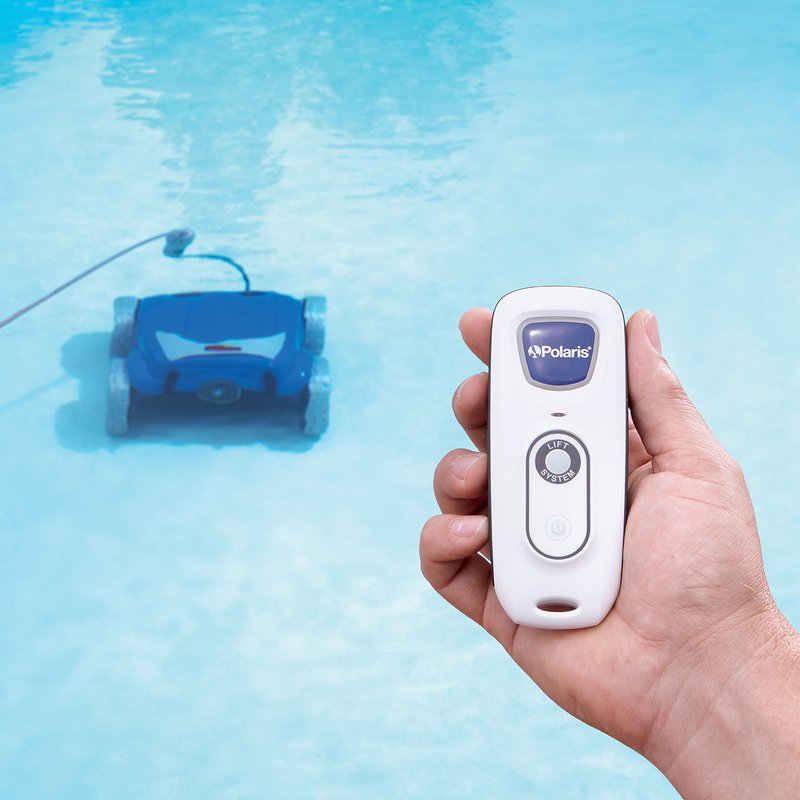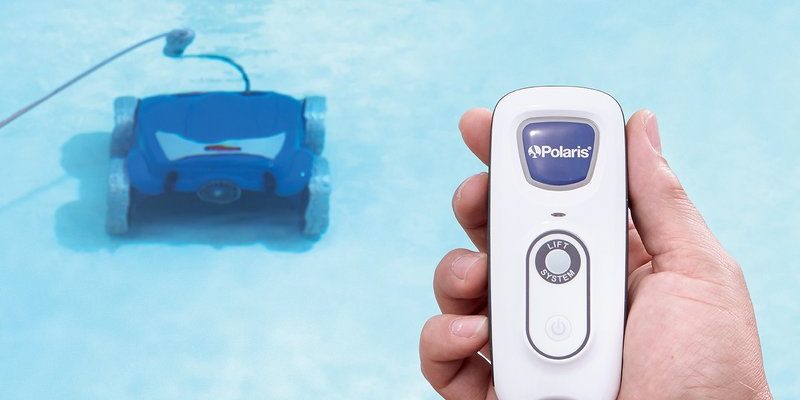
Here’s the thing: When a Polaris pool remote—especially the handheld wireless ones that come with automatic pool cleaners or fancy smart pool systems—goes silent after rain, it’s not just you. It’s a common headache. Water and electronics aren’t exactly best friends, and even well-built remotes aren’t immune to a good soaking or a bout of humidity. Let’s unpack what actually happens, why it’s so common, and what you can do about it—without needing a degree in electrical engineering.
How Rain Can Affect Your Polaris Pool Remote
Polaris pool remotes seem pretty tough on the outside, but water from a summer downpour can sneak in through the smallest cracks. If you leave the remote near the pool, on a table, or anywhere those gentle rain droplets can get inside, you may be setting the stage for trouble before you realize it.
Moisture can work its way into the battery compartment or even seep around the rubber buttons and screen. The thing is, even a little water can short out the delicate electronics inside. That can mean random button presses don’t register, the screen flickers, or—worst case—the remote just won’t turn on at all. It’s kind of like leaving your phone out in the rain: sometimes it bounces back, but sometimes it needs serious TLC.
Another factor is *humidity*. Even if you stash your remote in a “dry” place, high humidity after a storm can still create condensation inside the device. Over time, this can corrode the battery contacts or the internal circuit board. If you notice rust, greenish buildup, or any odd smell when you open the battery cover, you’re seeing the signs of water damage.
Here’s an often-overlooked detail: sometimes it’s not even direct rain, but droplets from swimmers, leaky pool floats, or drips tracked from wet hands. Any kind of moisture is the enemy of these little electronic brains, so rain just makes the risk that much higher.
Common Symptoms of a Water-Damaged Polaris Remote
When a Polaris pool remote acts up after rain, it usually doesn’t just quit instantly. There are telltale clues if you know what to look for.
- No response at all: The “dead remote” problem—press any button, and nothing happens. The pool system doesn’t react, the remote doesn’t light up, and it might feel like a brick in your hand.
- Delayed or partial responses: Sometimes, the remote works on and off. Maybe you press the “clean” button three times before the pool robot starts moving. Or you get stuck on one setting and can’t change modes.
- Display issues: On remotes with digital screens, you might see flickering, odd lines, or blank displays. This can point to internal short circuits or water condensation affecting the electronics.
- Stuck or unresponsive buttons: If a button feels mushy or doesn’t “click” like it used to, water may have gummed up the works inside.
Honestly, it can feel a bit like your remote is throwing a tantrum. But spotting these signs early makes troubleshooting way easier and can even save your remote before it’s too far gone.
Troubleshooting Steps: What To Do First
Before you panic or buy a replacement, there are a few basic things you can try to revive your Polaris pool remote after rain.
- Remove the batteries immediately: This is crucial. If water has gotten inside, taking the power source out can stop short circuits and further damage.
- Dry the remote thoroughly: Open any accessible covers and let the remote air out. If you have a bag of dry rice or silica gel packets, place the remote inside and leave it for at least 24 hours. This can help draw out lingering moisture.
- Gently clean the battery contacts: Corrosion can block the connection. Use a cotton swab and a bit of rubbing alcohol to gently wipe the contacts. Let them dry before reinserting new batteries.
- Try a reset: For some Polaris remotes, a reset involves holding down specific buttons (often “Power” + “Sync”) for a few seconds. Check your model’s manual for the exact code or steps.
- Test with fresh batteries: Sometimes, water can short or drain the old batteries. Pop in a new set and see if that brings the remote back to life.
If you’re lucky, these simple steps will fix the issue. But if there’s still no response, it may be time to dig deeper or think about syncing or pairing the remote again.
How Pool Remote Pairing and Syncing Works
You might be wondering—why does your pool remote need to “pair” or “sync” with the rest of your Polaris system anyway? Think of it like Bluetooth headphones: the remote talks to a receiver, and they need to understand each other’s “language.”
Most Polaris pool remotes rely on a wireless signal—either infrared (IR) or radio frequency (RF)—to control the pool’s filtration, cleaning cycles, and water features. After a rain, if the remote still doesn’t work even after drying out, the connection between the remote and the pool’s receiver may have been disrupted.
Sometimes, a power outage or water exposure can make the remote “forget” its pairing code with the system. To fix this, you’ll need to:
- Put the pool system into “pairing mode” (usually by pressing a button on the receiver unit or control panel)
- Hold a specific button combo on the remote (check your manual—often “Power” + “Up Arrow” or similar)
- Wait for a light to flash or a confirmation beep to show pairing was successful
It’s simple in theory, but don’t be surprised if you need to try more than once. Sometimes everything works but the signal is weak, especially if the remote’s internal antenna got wet or damaged.
When To Replace the Remote (and What To Look For)
Let’s face it: Sometimes, the best troubleshooting in the world won’t save a waterlogged remote. If you’re still stuck, it might be time to consider a replacement. Here’s how to know:
- Repeated failures to reset or pair: If you’ve tried every code, every battery, and every drying trick, the internal circuit board may be toast.
- Visible water or corrosion: If you see green spots, rust, or water behind the screen, it probably isn’t coming back.
- Physical damage: Warped plastic, cracked screens, or molded rubber often signal it’s time to move on.
When shopping for a replacement, consider:
- Sticking with a genuine Polaris remote for full compatibility
- If your pool controller supports universal remotes (rare but possible), check manufacturer recommendations
- Choose remotes with better waterproof or water-resistant ratings, if available
Replacing a remote can feel like a hassle, but sometimes it’s the only way to get your pool system reliably back online.
Can You Waterproof Your Polaris Pool Remote?
Wouldn’t it be nice if every pool remote was totally waterproof, like a fancy diving watch? Sadly, most standard Polaris remotes only offer *basic* water resistance—they’re built to handle splashes, not being left in the rain overnight.
If you want to protect your next remote—or save your current one from future downpours—there are a few things you can do:
- Keep it indoors or under cover: Get in the habit of bringing your remote inside after use, or store it in a weather-resistant box near the pool.
- Use a waterproof case or bag: Even a heavy-duty ziplock can help, especially if you have kids who like to test boundaries (and pool toys).
- Add a silicone sleeve: Some third-party sleeves or skins add grip and can help seal out minor splashes and humidity.
The best defense is prevention. Treat your remote like your phone: keep it dry, protected, and far away from thunderstorms.
How the Remote Interacts With the Pool System
If you’ve ever wondered why a simple remote can throw such a wrench in your pool routine, let me explain. The Polaris remote is kind of like the conductor of a small orchestra—the pool controller, pumps, cleaner, and lights all wait for its cue. When that signal doesn’t get through (because of water, dead batteries, or lost pairing), the rest of the system just sits there, waiting for instructions.
Most Polaris pool remotes use a mix of coded signals and short-range radio to tell the main control box what to do. When water gets inside, it can:
- Block or scramble those signals, like static on a walkie-talkie
- Interrupt the power flow from the battery, so the remote won’t turn on
- Trigger tiny short circuits, which confuse the onboard “brain” and make button presses fail
*Here’s an interesting bit*: Some Polaris systems let you control features through a phone app or built-in wall panel. If your physical remote dies after rain but the app still works, you know the issue is with the remote, not the system itself.
Final Thoughts: Keeping Your Polaris Pool Remote Happy (and Dry)
Here’s the bottom line: If your Polaris pool remote becomes unresponsive after rain, don’t panic. Water and electronics are a tricky combo, but a little attention right away can often bring things back to normal. Most issues come down to moisture sneaking inside, weak batteries, or disrupted syncing with the pool controller. Drying out the device, checking for obvious damage, and re-pairing the remote can solve a lot of problems.
Going forward, treat your pool remote like you would any other important gadget—keep it dry, stow it safely, and give it a quick check after storms. A few simple habits can save you the headache of unexpected downtime, and help you make the most of your Polaris pool system all season long. If all else fails, a replacement remote might be the easiest fix, but with a little know-how, you can often breathe new life into an unresponsive remote—rain or shine.
